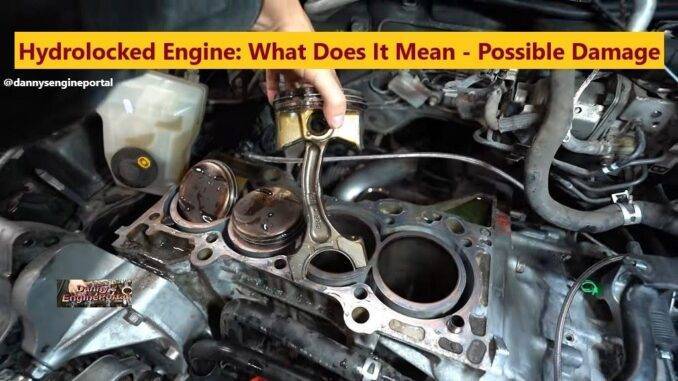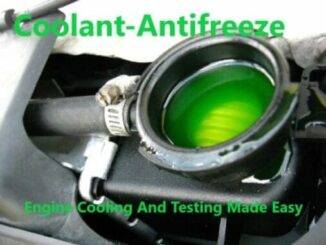
When an engine is seized, from taking in a substantial amount of liquid, it is a hydrolocked engine.
So, with all internal combustion engines, the internals are all designed, to deal with compressed air.
Because, liquid is non-compressible, when leaked into the cylinders, it is said to be hydrolocked. And, it make sense, that two things can’t occupy the same space.
The amount of damage from a hydrolocked engine, depends on the engines speed when the liquid was taken in.
The amount of liquid, the type and how it got in, all have a major effect, on what happens. So, when your engine first sees, extra liquid in the cylinders, your engine will begin to misfire. However, if it’s just a small amount of liquid, it might just, blow it right out the exhaust. But, if more liquid is drawn in, you’ll hear a loud knocking noise, as the cylinders fill up.
So, it could be just a second or two and then your engine will shut off with a thud.
Causes Of A Hydrolocked Engine
By and large, the most common cause, is water entering the air intake. Water can enter the intake on any engine, whether it’s from driving through it or an actual flood.
Also, engine coolant, can enter the cylinders, when a head gasket blows. A failure in the carburetor or injectors can introduce, liquid gasoline or diesel into the cylinders.
Damage From A Hydrolocked Engine
Big Leak, Fast Engine Speed
The real damage occurs when a large volume of liquid, makes its way into the cylinders. Also, with higher engine speed, comes more engine damage.
The reaction forces involved, will almost certainly break, internal parts like:
- Piston Damage
- Cylinder Walls Crack
- Connecting Rods Bend
- Connecting Rods Snap & Go through the oil pan
- Damage to the cooling system
- Cold Water Shock to Hot Engine
- Head Gasket Failure
- Catalytic Converter Damage
- Rod/Main Bearing Wash out
- Crankshaft Damage
Again, the amount of liquid taken in and where it came from, will reflect the amount of damage.
Small Leak, Slow Engine Speed
Amounts of liquid significant enough to cause hydrolock, tend to upset the air/fuel mixture in gasoline engines. This result, could make the engine just stall. Then, if hydrolock actually occurs, it does not cause, major engine damage. If an engine hydrolocks at idle speed, it may simply stop and refuse to turn over.
Consequently, there may well be, no internal damage. You may be able to correct this, by removing the spark plugs or injectors. Next, turn the engine over, using the starter motor. This will help expel the liquid from the cylinder or cylinders. Once reassembled, the engine should start as normal.
The hydrolocked engine was a symptom, not the cause. So, if the liquid was introduced to the cylinder, through a failed component, this must be repaired. (typically the head gasket)
So, coolant is corrosive to the internal parts of an engine. As a result, when you leave this standing for any length of time, the damage will only get worse. Also, remember engine coolant, eats bearing material. Trying to restart the engine, will only cause further damage.
- Starter
- Flywheel
- Transmission
- Cause A Head Gasket Leak
- Engine Block
- Transmission Housing
- Connecting Rods
- Pistons
Consequently, a hydrolocked engine, can also occur, when the engine is not running. Flood damage, for example. Fluid fills the cylinders, while the engine is not running. Then, the starter, can’t crank the engine over.
Conclusion
So, the best thing to do is, avoid driving through any flooded streets. But, if you do, slow down.
The sad thing about a hydrolocked engine, is that it can strike without warning. That’s why regular maintenance and inspections, are the best way to keep on top of this issue. Preventative maintenance, is a lot cheaper and much safer, than a hydrolocked engine.
BY DANNY BENDER




